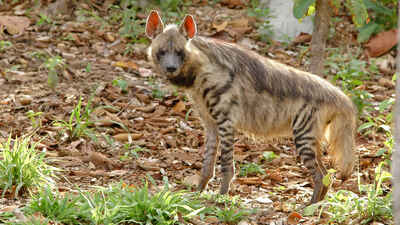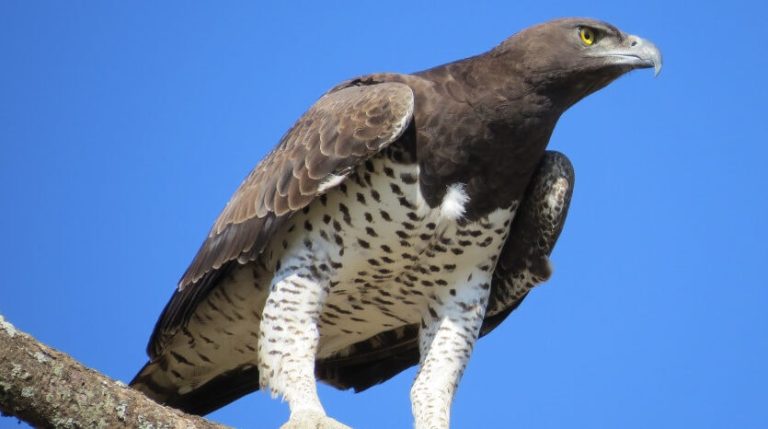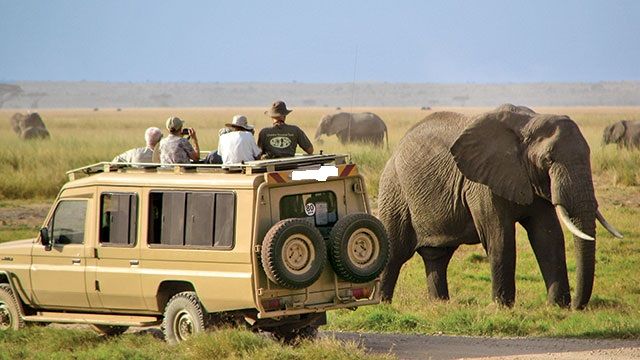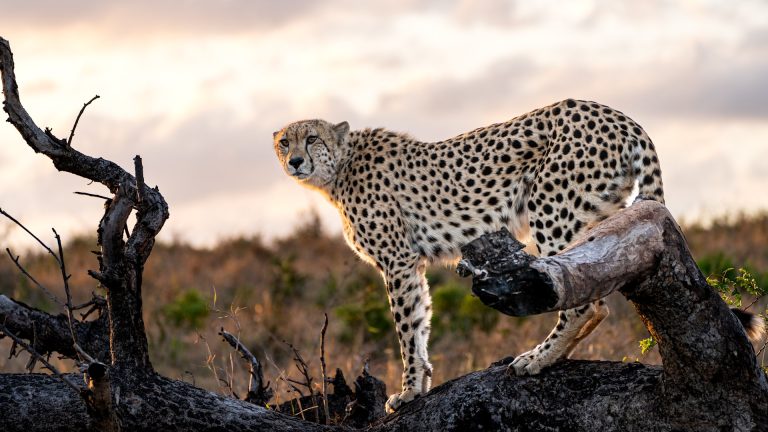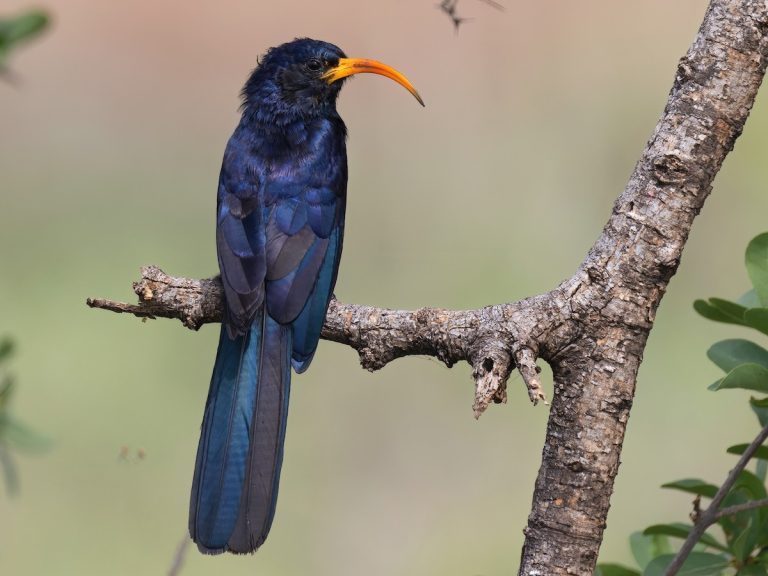Introduction: The Fearless Hunter of the Serengeti
The Serengeti is home to some of the most remarkable predators, but few are as unique as the secretary bird (Sagittarius serpentarius). This long-legged raptor, often mistaken for a stork due to its distinctive appearance, is one of the most efficient and unconventional hunters of the African savanna. Unlike other birds of prey that hunt from the sky, the secretary bird relies on its powerful legs, sharp beak, and relentless determination to take down prey, including some of the most venomous snakes found in the Serengeti.
This article delves deep into the hunting behavior of the secretary bird, exploring how this fascinating predator uses speed, strategy, and sheer force to dominate the Serengeti grasslands.
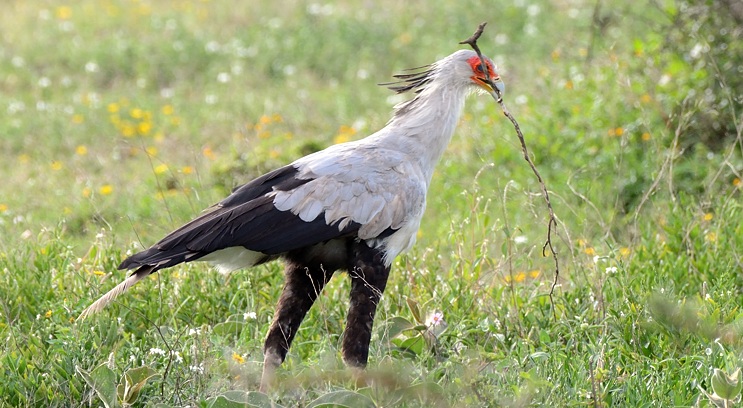
Physical Adaptations for Ground Hunting
1. Long, Powerful Legs
- The secretary bird’s legs are uniquely adapted for delivering rapid, forceful strikes to immobilize prey.
- Despite their slender appearance, these legs are equipped with strong muscles that generate immense force—capable of delivering a deadly blow to a snake’s skull in milliseconds.
2. Sharp Beak and Hooked Tip
- Although their legs do most of the hunting, secretary birds also use their sharp, hooked beaks to tear apart prey.
- Their beaks are crucial for finishing off prey that may still be moving after the initial attack.
3. Long Eyelashes and Protective Feathers
- Secretary birds have long eyelashes that protect their eyes from debris and dust as they stomp on prey.
- Their thick, scale-covered legs provide armor against bites from venomous snakes, ensuring they can battle dangerous prey with minimal risk.
Hunting Techniques of the Secretary Bird
1. Stalking and Spotting Prey
- Unlike raptors that hunt from above, secretary birds rely on sharp eyesight to scan the open grasslands while walking.
- They move in pairs or alone, methodically covering large distances as they search for insects, rodents, small birds, and reptiles.
2. The Lightning-Fast Stomp
- Once a secretary bird spots prey, it rapidly closes the distance and delivers a series of high-speed stomps.
- Research has shown that a secretary bird can strike with a force up to five times its body weight, instantly killing small mammals or crushing a snake’s skull before it can retaliate.
3. Battling Venomous Snakes
- One of the most astonishing aspects of secretary bird hunting behavior is their ability to take down venomous snakes such as cobras and puff adders.
- Their strategy involves repeatedly striking the snake’s head while maintaining a safe distance to avoid being bitten.
- If the snake retaliates, the bird quickly steps back, resets its stance, and continues the attack until the snake is subdued.
4. Coordinated Hunting in Pairs
- Though secretary birds are often solitary hunters, they sometimes hunt in pairs, especially during breeding seasons.
- In such cases, one bird may distract or flush out prey while the other delivers the fatal attack.
Diet and Prey Selection
1. A Versatile Predator
Secretary birds are opportunistic hunters, meaning they consume a wide variety of prey depending on availability. Their diet includes:
- Small mammals (mice, hares, and mongooses)
- Birds and their eggs
- Large insects (locusts, beetles, and grasshoppers)
- Amphibians and lizards
- Snakes (including venomous species)
2. Adapting to Seasonal Changes
- During the dry season, when larger prey is scarce, secretary birds rely more on insects and small rodents.
- In wetter months, they take advantage of increased snake activity, making them one of the most important natural controllers of venomous snake populations in the Serengeti.
The Role of Secretary Birds in the Serengeti Ecosystem
1. Controlling Snake Populations
- As natural predators of venomous snakes, secretary birds help maintain ecological balance by preventing an overpopulation of dangerous reptiles.
- Their ability to neutralize venomous species reduces the risk of human-snake encounters, indirectly benefiting local communities.
2. Maintaining Prey Population Control
- By hunting rodents, insects, and small mammals, secretary birds prevent agricultural pests from overrunning the Serengeti.
- Their predation keeps certain species from multiplying beyond sustainable levels, ensuring balance within the food chain.
3. Indicator of Grassland Health
- As birds that rely on open savannas for hunting, secretary birds serve as an indicator species—meaning their population trends reflect the overall health of Serengeti grasslands.
- A decline in secretary bird numbers could signal habitat degradation or ecosystem imbalances.
Conservation Status and Threats
1. Habitat Loss and Human Encroachment
- Expanding human settlements and agricultural activities threaten secretary bird habitats, reducing their available hunting grounds.
- Overgrazing by livestock can alter grassland dynamics, affecting prey availability.
2. Declining Food Sources
- Pesticide use in nearby regions reduces insect populations, which impacts the secretary bird’s primary food source.
- The decline of snakes due to human persecution also indirectly affects secretary bird populations.
3. Conservation Efforts
- The International Union for Conservation of Nature (IUCN) has classified the secretary bird as Vulnerable, meaning urgent conservation action is required.
- Protected areas like the Serengeti National Park provide essential hunting grounds where secretary birds can thrive without human interference.
- Ecotourism initiatives that highlight secretary birds encourage conservation awareness among visitors and local communities.
Conclusion: The Serengeti’s Aerial Predator on Foot
The secretary bird is a truly unique predator in the Serengeti, blending the grace of a bird with the power of a land-based hunter. Its striking hunting methods, from stomping venomous snakes to crushing rodents with precision, make it one of the most fascinating species to observe in the wild.
For wildlife enthusiasts visiting the Serengeti, spotting a secretary bird in action is an unforgettable experience—a reminder of nature’s ingenuity and the delicate balance that sustains Africa’s vast ecosystems. Ensuring their protection is not only vital for maintaining biodiversity but also for preserving the wild heart of the Serengeti for generations to come.


